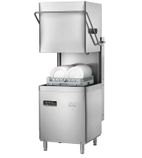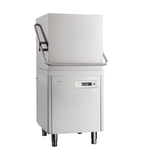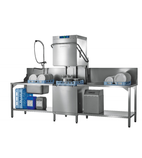Passthrough Dishwashers
For high capacity catering operations Catering Appliance Superstore recommends installing a passthrough dishwasher system to handle the volume of crockery and cutlery required for service, and to keep your kitchen or food production environment moving.
Passthrough dishwashers are available as drop down hood machines, or for even greater throughput, rack conveyor systems.
![]() * Items marked with the 'Order Today Delivered Tomorrow' graphic qualify for Next Day Delivery only if the item is ordered before the Next Day Delivery cut off time shown on the product page. Some Next Day Delivery services are chargeable.
* Items marked with the 'Order Today Delivered Tomorrow' graphic qualify for Next Day Delivery only if the item is ordered before the Next Day Delivery cut off time shown on the product page. Some Next Day Delivery services are chargeable.
Save Yourself Time!
Answer a few questions and we’ll help you find the right Passthrough Dishwashers for your business.

